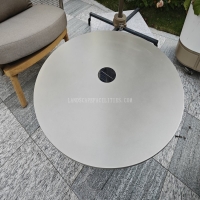Welcome to the website for landscape facilities products and knowledge.
How does pine resist insect infestation in landscape sculpture?
Pine wood is a popular choice for landscape sculptures due to its durability and natural resistance to insect infestation. This resistance stems from several inherent properties of pine, including its resin content, chemical composition, and physical structure.
1. Resin Secretion: Pine trees produce a sticky resin that acts as a natural barrier against insects. This resin contains terpenes and other compounds that repel or trap pests, preventing them from burrowing into the wood.
2. Chemical Defenses: Pine contains natural chemicals like pinene and limonene, which are toxic or deterrent to many insects. These compounds disrupt the feeding and reproductive cycles of pests, reducing infestation risks.
3. Density and Grain: The tight grain structure of pine wood makes it harder for insects to penetrate. While not as dense as hardwoods, properly treated pine can resist borers and beetles effectively.
4. Preservation Techniques: In landscape sculptures, pine is often treated with eco-friendly sealants or heat treatments to enhance its insect resistance without compromising its natural beauty.
By leveraging these natural and applied defenses, pine remains a sustainable and resilient material for outdoor art, combining aesthetics with practicality.
Related search:

Recommendation
Outdoor stainless steel table with solar-powered ambient lighting feature - excellent design.